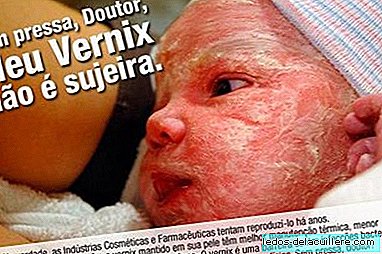
No hurry, doctor. My vernix is not dirt.
The newborn of this poster is not like the one we usually see in advertising. His skin is covered with the vernix caseosa, that sebaceous substance that forms a layer to protect the baby's delicate skin inside the womb
As we are told in the image, which wants to draw attention to the benefits of vernix, in reality the cosmetic and pharmaceutical industries have tried to reproduce this substance for years:
Newborns who have maintained vernix on their skin, have better thermal maintenance, fewer injuries and more skin hydration. Vernix is a barrier against bacterial infections, it increases the elasticity of the baby's skin, among many other benefits.
After birth, the vernix caseosa continues to protect the skin, although after 24 hours of life it is recommended to remove the remains to avoid infections or allergies caused by high humidity. Some professionals advise that, instead of removing this film with which some newborns are born, gently massage the skin to be absorbed by it.
Scientific evidence indicates that the surface of the skin, the vernix and the amniotic fluid are full of substances that protect the newborn against bacterial invasion at birth. Therefore, WHO recommends avoiding removing the vernix from the skin.
The baby may not be as bright in his first photographs, but if the benefits are so many, it would not be necessary to hurry to remove the vernix caseosa to the newborns…












